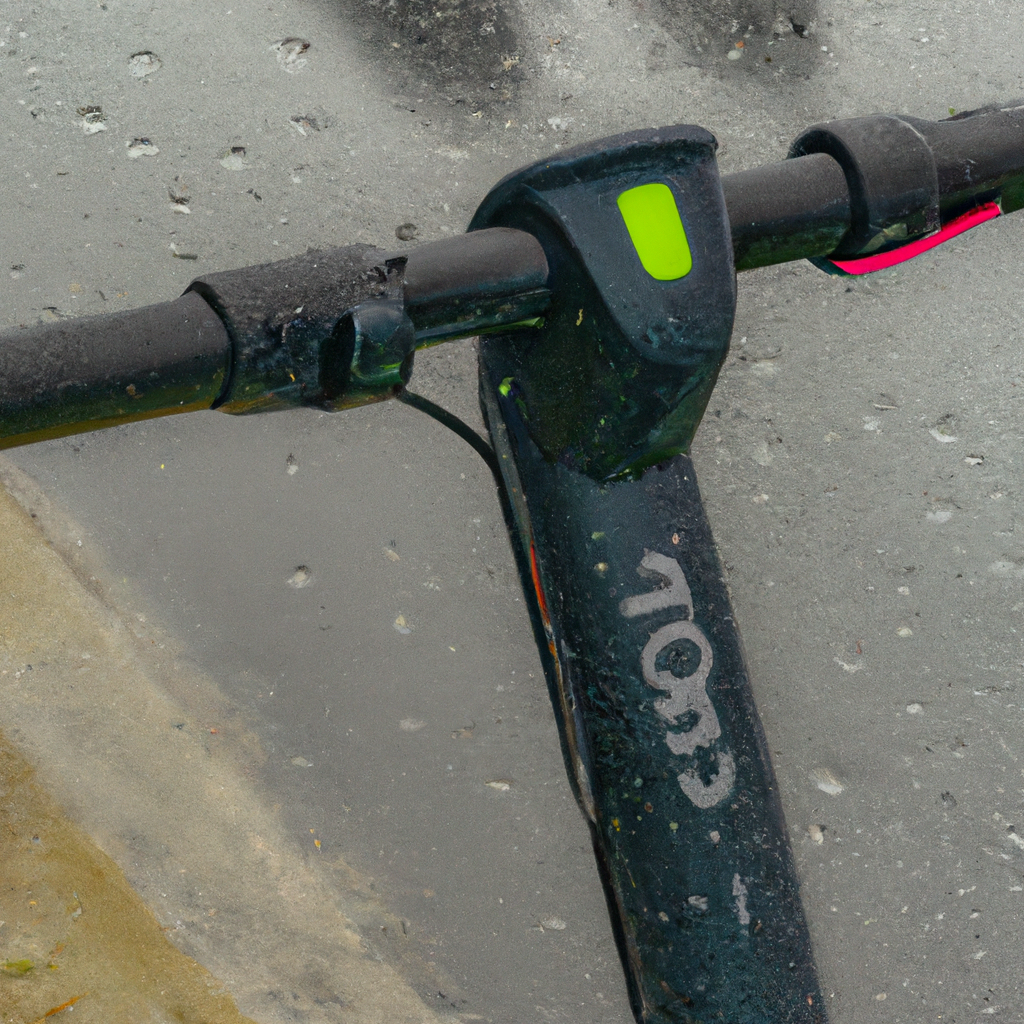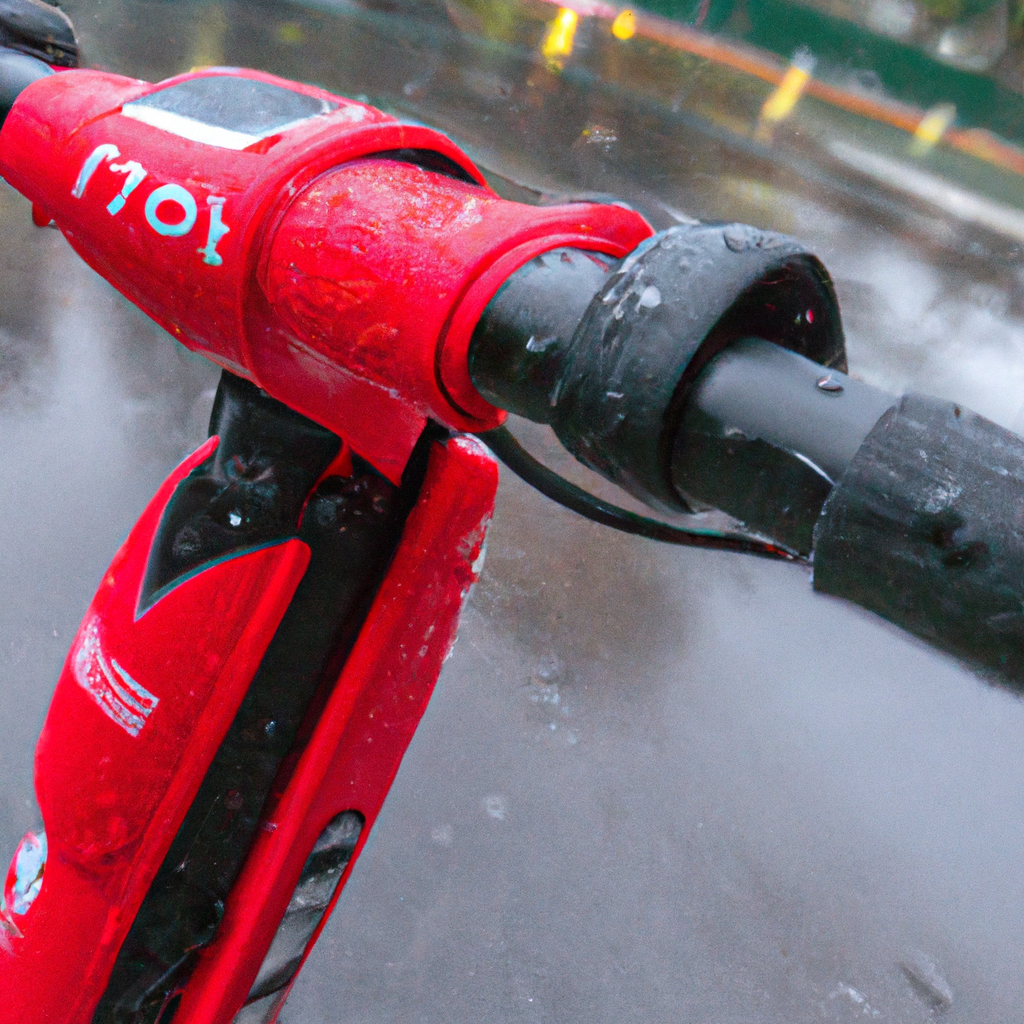So you’re wondering if electric scooters can be used in the rain, huh? Well, the answer is not as straightforward as you may think. While electric scooters are designed to be weather-resistant, exposing them to heavy rain can still cause some issues. Water can damage the electronic components, such as the battery and motor, which can lead to performance problems or even complete failure. However, light drizzles or riding on wet surfaces should generally be okay. It’s essential to take some precautions and ensure that your scooter is properly maintained if you plan on taking it out on a rainy day.
Can Electric Scooters Be Used in the Rain?
Electric scooters have become increasingly popular as a convenient and eco-friendly mode of transportation. They offer a cost-effective and efficient way to commute in urban areas. However, one concern that many riders have is whether electric scooters can be used in the rain. In this article, we will explore the water resistance and safety features of electric scooters, the effects of rain on their performance, maintenance and care tips in wet conditions, specialized rain gear for riders, precautions and safety tips, manufacturer’s recommendations, consumer experiences and reviews, comparisons with other transportation modes, and weatherproofing solutions. By the end of this article, you will have a comprehensive understanding of whether electric scooters can be used in the rain and how to ensure their longevity and safety in wet conditions.

Water Resistance and Safety Features
Water resistance is a crucial aspect to consider when it comes to using electric scooters in the rain. Most modern electric scooters are designed to be at least water-resistant, if not fully waterproof. They are built with IP (Ingress Protection) ratings that indicate their level of protection against various elements, including water. It is essential to check the IP rating of an electric scooter before purchasing to ensure it meets your requirements for riding in the rain.
Additionally, electric scooters often come with safety features that contribute to their water resistance. These features may include sealed electrical components, waterproof connectors, and even water-repellent coatings on the scooters’ surfaces. These measures help protect the vital electrical components and ensure that water does not enter places where it can cause damage or malfunctions.
Effects of Rain on Performance
While electric scooters are generally designed to withstand light rain and splashes, heavy rainfall can pose challenges to their performance. Riding an electric scooter in heavy rain can lead to reduced traction between the tires and the road, making the scooter more prone to skidding and accidents. Wet surfaces can also affect the scooter’s braking efficiency, potentially increasing stopping distances. It is important to exercise caution and adjust your riding style accordingly when riding an electric scooter in the rain.
Moreover, rain can affect the scooter’s battery life and performance. Prolonged exposure to water can cause damage to the battery, resulting in reduced capacity and overall performance. It is advisable to avoid riding in heavy rain for extended periods and to dry the scooter thoroughly afterward to prevent any potential water damage.
Maintenance and Care in Wet Conditions
To ensure the longevity and optimal performance of your electric scooter, it is crucial to take proper care and maintenance steps when riding in wet conditions. After riding in the rain, it is important to dry the scooter thoroughly, paying attention to areas where water might accumulate, such as the undercarriage, handlebars, and electrical connectors. This can be done using a dry cloth or an air compressor. Regularly inspecting and cleaning the scooter’s components, including the brakes, tires, and electrical connections, can help identify any potential issues caused by water exposure and prevent further damage.
Additionally, applying a protective coating or waterproof spray on the scooter’s exposed surfaces can provide an extra layer of protection against rainwater. This can help prevent corrosion and damage to the scooter’s frame and other metal parts.
Specialized Rain Gear for Riders
Investing in specialized rain gear can significantly enhance your riding experience and safety when using an electric scooter in the rain. A waterproof jacket and pants can keep you dry and comfortable while riding through wet conditions. Look for gear that is not only waterproof but also breathable to prevent excessive sweating and discomfort. Waterproof gloves and shoe covers can also protect your hands and feet from getting soaked, ensuring a safer and more enjoyable ride.

Precautions and Safety Tips
When riding an electric scooter in the rain, it is important to take certain precautions to ensure your safety. Firstly, always reduce your speed and be cautious of slippery surfaces. Wet roads can be treacherous, so it is crucial to give yourself extra time to react to any unforeseen circumstances. Keep a safe distance from other vehicles and pedestrians to allow for increased braking distances.
Secondly, make sure you have proper lighting on your scooter, especially during rainy conditions with reduced visibility. Use front and rear lights, as well as reflectors, to make yourself more visible to other road users. Wearing reflective clothing can also enhance your visibility, especially during rainy and foggy weather.
Lastly, remember to always wear a helmet when riding an electric scooter, regardless of the weather conditions. A helmet provides crucial head protection in case of accidents and should be an essential part of your safety gear.
Manufacturer’s Recommendations
To ensure the best performance and longevity of your electric scooter, it is crucial to follow the manufacturer’s recommendations regarding riding in the rain. Manufacturers may provide specific guidelines on the level of water resistance their scooters offer, as well as any limitations or precautions to be taken in wet conditions. These recommendations can help you understand the capabilities and limitations of your electric scooter and ensure its safe usage in the rain.

Consumer Experiences and Reviews
Reading consumer experiences and reviews can provide valuable insights into how electric scooters perform in the rain. Many electric scooter users share their experiences online, discussing the performance and water resistance of different models in various weather conditions. These firsthand accounts can help you make an informed decision when selecting an electric scooter suitable for riding in the rain. Pay attention to common issues or praises mentioned by multiple users to get a better understanding of the scooter’s performance in wet conditions.
Comparisons with Other Transportation Modes
When deciding whether to use an electric scooter in the rain, it is worth considering how it compares to other transportation modes. While electric scooters might offer a convenient and efficient way to commute, other options such as buses, trains, or even cars may provide better protection from the rain. However, electric scooters can still be a viable option for short distances and if you have appropriate rain gear and take necessary precautions.

Weatherproofing Solutions
If you plan to frequently ride your electric scooter in the rain, you may consider investing in additional weatherproofing solutions. There are various accessories available in the market, such as scooter covers or rain shields, that can provide extra protection against rainwater. However, it is important to ensure that these accessories do not interfere with the scooter’s operation or safety features.
Additionally, some users opt for DIY weatherproofing by applying waterproofing sprays or coatings to their scooters. While this may offer some added protection, it is crucial to carefully research and follow instructions to avoid damaging the scooter or compromising its safety.
Conclusion
In conclusion, electric scooters can generally be used in the rain, provided they have adequate water resistance and necessary safety features. It is crucial to check the IP rating and manufacturer’s recommendations, as well as exercise caution and follow maintenance and care tips when riding in wet conditions. Specialized rain gear can enhance your comfort and safety, while precautions such as reduced speed and increased visibility can help prevent accidents. By considering these factors, you can confidently enjoy riding your electric scooter in the rain while ensuring its longevity and optimal performance.




